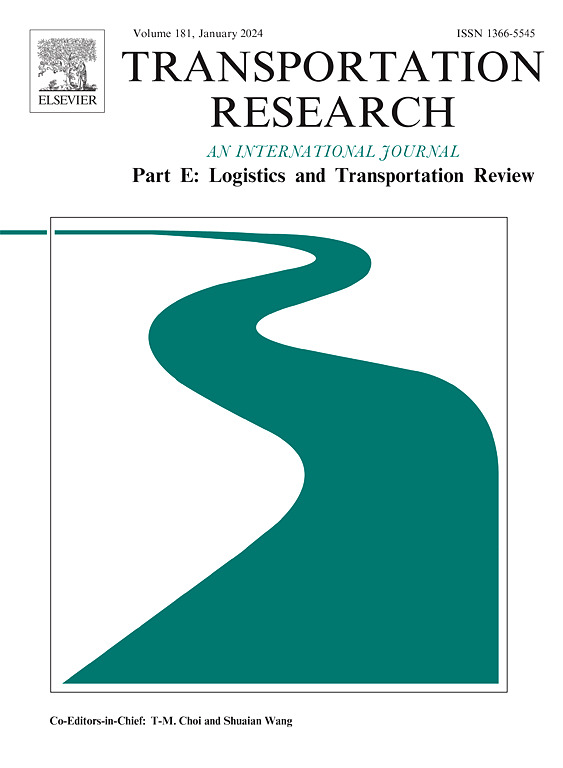Arrival information-guided spatiotemporal prediction of transportation hub passenger distribution
IF 8.3
1区 工程技术
Q1 ECONOMICS
Transportation Research Part E-Logistics and Transportation Review
Pub Date : 2025-02-10
DOI:10.1016/j.tre.2025.104011
引用次数: 0
Abstract
Understanding the spatiotemporal distribution of hub passenger flow is essential for optimizing both hub and urban transportation operations. However, predicting spatiotemporal distribution of transportation hub passenger flow encounters is challenging due to complex factors influencing its dynamics. This paper proposes a deep learning model, the Deep Spatiotemporal Graph Attention Network (DSTGAT), to predict the spatiotemporal distribution of hub passenger flow in urban areas. The DSTGAT consists of two modules: a spatiotemporal passenger flow prediction module and a passenger flow correction module. The spatiotemporal prediction module integrates Graph Attention Networks (GATs) and Gated Recurrent Units (GRUs) to capture the spatial and temporal dependencies in passenger flow, considering factors such as land function, adjacency, distance to the hub, and weather conditions. The passenger flow correction module uses Dynamic Time Warping (DTW) to identify the similarity of historical arrival passenger flows. Based on this similarity, it selects the most similar passenger flow distribution for prediction correction. A case study using data from Beijing Daxing International Airport in China demonstrates the superior performance of the DSTGAT compared to baseline models. The model exhibits robust predictive accuracy, particularly in regions with high passenger flow fluctuations and during holiday periods. The study highlights the importance of considering external factors and arrival passenger flow in achieving accurate hub passenger flow predictions.
求助全文
约1分钟内获得全文
求助全文
来源期刊
CiteScore
16.20
自引率
16.00%
发文量
285
审稿时长
62 days
期刊介绍:
Transportation Research Part E: Logistics and Transportation Review is a reputable journal that publishes high-quality articles covering a wide range of topics in the field of logistics and transportation research. The journal welcomes submissions on various subjects, including transport economics, transport infrastructure and investment appraisal, evaluation of public policies related to transportation, empirical and analytical studies of logistics management practices and performance, logistics and operations models, and logistics and supply chain management.
Part E aims to provide informative and well-researched articles that contribute to the understanding and advancement of the field. The content of the journal is complementary to other prestigious journals in transportation research, such as Transportation Research Part A: Policy and Practice, Part B: Methodological, Part C: Emerging Technologies, Part D: Transport and Environment, and Part F: Traffic Psychology and Behaviour. Together, these journals form a comprehensive and cohesive reference for current research in transportation science.

 求助内容:
求助内容: 应助结果提醒方式:
应助结果提醒方式:


